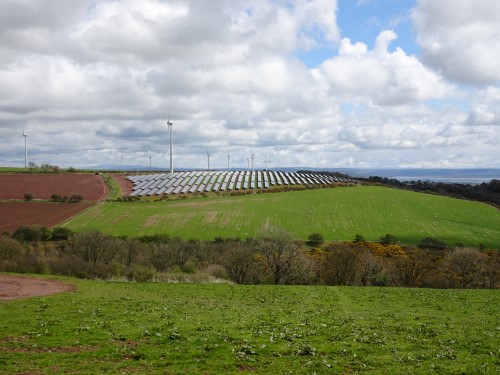Analysis by the National Grid has described how a combination of solar, wind and nuclear, alongside the absence of coal, has pushed carbon emissions to their lowest point of the season, with nearly 52% of power coming from low-carbon sources, compared to 35% in 2013, while the carbon intensity of the U.K. grid – measured between June 21 and September 22 – was more than half its level over the same period four years ago.
Furthermore, a growing number of solar and wind farms, alongside nuclear and gas power generation, have transformed the summer’s power supply and broken new records, with one Friday in May recording more power provided by solar panels than by the U.K.’s entire nuclear generation capabilities.
The low-level of emissions come as the first subsidy-free large solar power project opens in the U.K. in Bedfordshire, which has been hailed as “a significant moment for clean energy in the U.K”, by Climate Minister Claire Perry
“It’s been a summer of records. The big fundamental shift has been the continuing growth in offshore wind and solar coming on,” added Duncan Burt, director of the system operator at National Grid. “We’ve gone from renewables being a part of the mix to often being a significant, majority part of the mix.”
He stressed that while some days could have been sunnier and windier in August, intermittent power sources management was very well handled, and that this trend was likely to continue.
However, even though the National Grid has said that managing the amount of variable, renewable power on the system is not weighing on consumer costs for the time being, a report published this year by the UK Energy Research Centre warned that balancing wind and solar intermittently could result in increased costs for consumers if the grid cannot find more flexibility, such as with new battery storage capacity.
Additional research from Imperial College London has concluded that the correct combination of solar power and batteries could be extremely financially attractive to families by around 2030.
This content is protected by copyright and may not be reused. If you want to cooperate with us and would like to reuse some of our content, please contact: editors@pv-magazine.com.



By submitting this form you agree to pv magazine using your data for the purposes of publishing your comment.
Your personal data will only be disclosed or otherwise transmitted to third parties for the purposes of spam filtering or if this is necessary for technical maintenance of the website. Any other transfer to third parties will not take place unless this is justified on the basis of applicable data protection regulations or if pv magazine is legally obliged to do so.
You may revoke this consent at any time with effect for the future, in which case your personal data will be deleted immediately. Otherwise, your data will be deleted if pv magazine has processed your request or the purpose of data storage is fulfilled.
Further information on data privacy can be found in our Data Protection Policy.